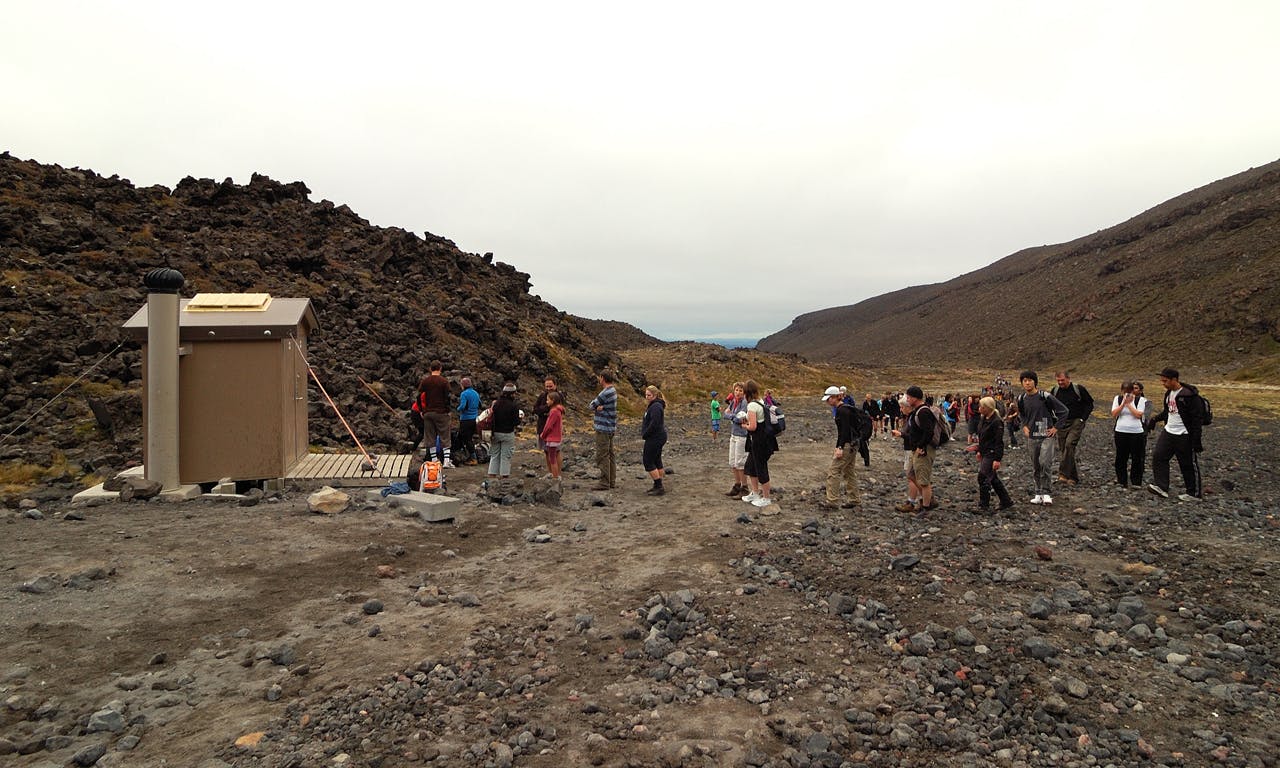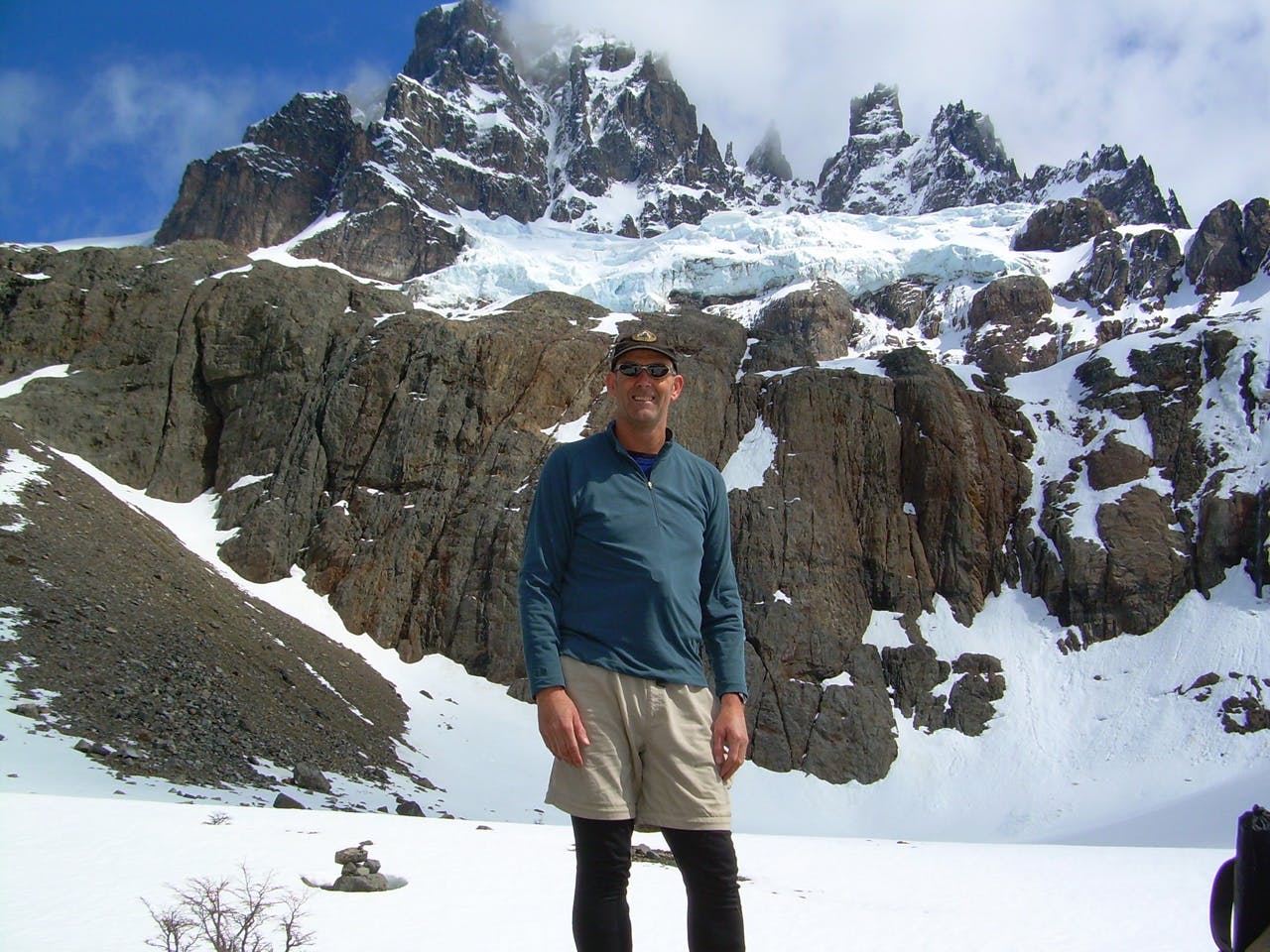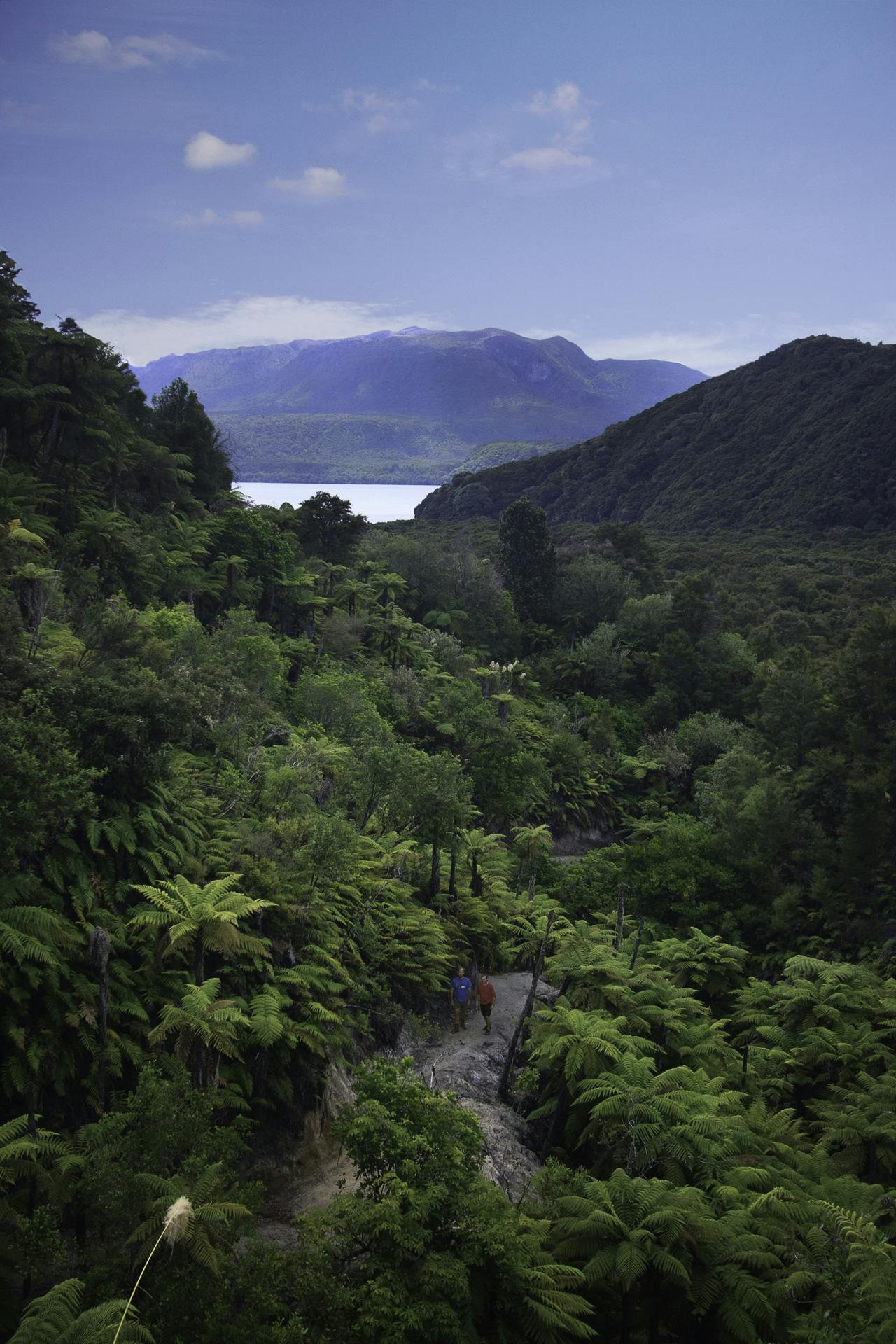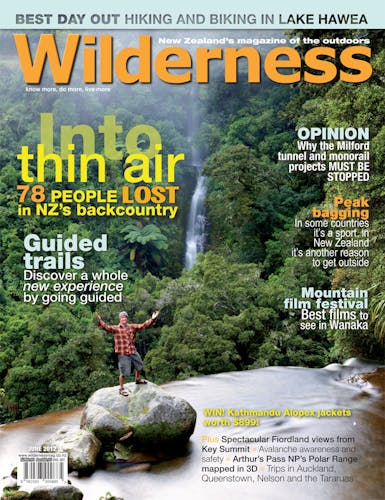DOC aligns campsite and Great Walk hut fees
The Department of Conservation is set to introduce a new three-tiered pricing system for huts on the Great Walks network and paid campsites throughout the country.
Current fees for paid campsites and Great Walks huts vary around the country. The new system, which comes into effect on July 1, will set uniform charges to make it simpler for users to plan outdoor trips and book accommodation.
DOC Commercial Business Unit (CBU) Director David Wilks said in a statement that the inconsistency of fees under the current system means people pay different prices in different parts of the country for the same service.
“DOC faces growing costs to maintain our hut and campground network and, instead of simply putting fees up by a set amount, we’ve taken the opportunity to align our prices nationally in a much simpler system,” Wilks said. “By doing this we aim to give customers consistency and confidence when booking accommodation – making it easier to plan their trips to the great outdoors.”
Wilks added the impact on existing Great Walk and campsite charges will vary around the country, with some fees rising by a couple of dollars a night and others falling.
“We want a simple and affordable system – for example we think a maximum charge of $15 a night for an adult at a serviced campground is still reasonable.”
The changes affect only those fees that DOC already charges at its standard and serviced camp grounds and the high standard Great Walk huts.
The new pricing from July 1
Campsites – per adult, per night
- Tier 1 (Serviced campsites) $15
- Tier 2 (Scenic Campsites) $10
- Tier 3 (Standard Campsites) $6
DOC’s current serviced campsite fees range from $4 to $19 dollars depending on location.
Great Walks Huts – per adult, per night
- Tier 1 (includes Milford, Routeburn and Kepler Tracks): $54 – up $2.90.
- Tier 2 (includes the five mid-range Great Walks: Abel Tasman Coast Track, Heaphy Track, Tongariro Northern Circuit, Whanganui Journey, Lake Waikaremoana Track): $32 – costs currently range from $30.60-$35.70.
- Tier 3 (includes the Rakiura Track): $22 – up $1.60
Helping Ruahine huts remain
A tramping club has come up with a unique way to help save backcountry huts which could face years of little or no maintenance and eventual removal due to a lack of visitors.
The Palmerston North Tramping and Mountaineering Club has started a hut bagging challenge with the aim of getting club members to visit as many of the Ruahine Forest Park huts as possible in the space of one year.
Conceived by member Janet Wilson the challenge has resulted in many club members dusting off their boot and heading to seldom-visited huts. Club member Terry Crippen said: “Some members have visited 20 or more [huts] already this year.”
He added: “Many of the huts in the Ruahines and throughout New Zealand are under threat as a result of the Department of Conservation’s policy of no maintenance and eventual removal if hut book entries are low. Most of these huts are New Zealand Forest Service huts and are part of our backcountry heritage. DOC is only the manager of them on our behalf and needs to adopt a quite different approach – the huts are ours not theirs.”
In the battle to save huts from dilapidation and removal, the PNTMC has already taken over the maintenance of Ngamoko and Mid Pohangina huts and will co-manage Rangi Hut with DOC.
“I would would encourage all trampers to continue to make good use of the network of huts and always fill in the hut books on each visit,” said Crippen.
Near miss for ill-prepared trampers on alpine crossing

People often walk to the popular Tongariro Alpine Crossing in inappropriate clothing
Police and the Tongariro Alpine Crossing user’s group have criticised a shuttle bus operator for allowing a group of 16 inexperienced and poorly attired walkers to attempt the crossing in the face of dangerous weather conditions.
Police received an emergency call on April 28 around noon regarding a party of 16 walkers who were in difficulty at the summit of Mt Tongariro.
The group had been dropped off in the morning at Mangatepopo car park by Mountain Shuttles and intended to walk the 19km track to their waiting vehicles parked at Ketetahi.
Police said the weather conditions in the area were hazardous with poor visibility, rain, strong winds and very cold temperatures. The group were inexperienced and lightly clad, some wearing shorts, others wearing jeans and none with any alpine clothing.
Police said the group were informed by Mountain Shuttles operator Kevin Gardiner that the weather would improve and they would be fine.
However, by the time they reached the summit of Tongariro the weather had not improved and the group were soaked to the skin with many of them in the early stages of hypothermia.
Two other trampers came across them and provided warm clothing to the worst affected before helping them down to South Crater where a DOC hut warden had been dispatched to assist.
Two search and rescue teams from Ruapehu Alpine Rescue Organisation met the group near Soda Springs and provided food, drink and dry clothing and led them back to Mangatepopo car park where they were treated by three waiting ambulances.
Two females from the group were subsequently transported to Taupo hospital for further treatment.
Inspector Steve Mastrovich said encouraging ill-prepared and under-equipped people to go into an alpine environment is irresponsible and contrary to the practices of the local tourism operators who are members of the Tongariro Alpine Crossing user’s group.
“We’ll definitely be having a talk with Mountain Shuttles and we’ll be discussing it with DOC,” said Mastrovich who was a policeman at National Park station for 10 years. “This used to be a common occurrence which is why DOC, the police and the shuttle operators got together about seven or eight years ago and set up the user’s group. Since then, commercial operators have done a fantastic job of regulating themselves and now just refuse to take people up there if the conditions aren’t right so it’s quite gutting this type of thing can still happen.”
Mountain Shuttles operator Kevin Gardiner told Wilderness he based his advice to the group on the National Park weather forecast which said the gale force winds blowing in the morning would stop in the afternoon and the showers would cease later that morning. He told them they didn’t have to do the crossing and if they wanted to turn around they could contact him for a pick up.
“They were all adults over 30 and I saw woollen beanies and jumpers on them,” Gardiner said. “People need to take responsibility for their decisions.”
However, Gardiner acknowledges he got it wrong this time and regrets agreeing to drop them off.
Tongariro Alpine Crossing user’s group chairman Stu Barclay told Wilderness Mountain Shuttles never attends the user’s group’s regular meetings and may not be familiar with its protocols.
He said in the next six months the group and DOC will be working out a new system to ensure there are consequences for operators who don’t follow protocol.
– Josh Gale
New LandSAR CEO appointed

Harry Maher
New Zealand Land Search and Rescue Inc (LandSAR) appointed Harry Maher as its new Chief Executive.
Maher, 53, comes from a series of senior roles at the Department of Conservation, most recently as commercial portfolio manager in the Commercial Business Unit.
Prior to working for DOC he worked for approximately 10 years in the adventure tourism industry as a white water raft guide, ski patroller and heli-ski guide.
LandSAR Chair Phil Melchior said Maher comes to LandSAR with a strong track record in building partnerships with leading New Zealand businesses.
“Securing a sustainable funding future for LandSAR is a priority for the Board and Harry is a key element of our future strategies in what are difficult financial times for small organisations,” Melchoir said. “Harry will also be instrumental in continuing to build our group capacity and capability so that LandSAR can continue to provide efficient and effective land search and rescue services to everyone.”
Maher said he is looking forward to the great opportunities that lie ahead for LandSAR.
Tarawera Great Walk on track again

The track around Lake Tarawera us being built to Great Walk standard
A conservation group has withdrawn an Environment Court appeal against a new car park proposed for the Tarawera Trail in Rotorua, allowing the building of a Great Walk-standard track to recommence.
DOC Rotorua programme manager for visitor assets John Tupara said the appeal, lodged by the Lake Tarawera Conservation Society, had put the project two years behind schedule and had been “the bane of their lives”.
“We couldn’t progress any further until we got the go ahead to build the car park,” he said. “It’s been costly to deal with.”
Rotorua District Council granted DOC a certificate of compliance for the trail and a resource consent to build a car park near Te Wairoa Valley, but it was appealed in the Environment Court by the Lake Tarawera Conservation Society.
The Society, headed by resident Ron Baskett, opposed the car park because its members believed it would destroy the pristine landscape and threaten the lake’s water quality.
DOC, however, argued the impact would be negligible and said in a statement that the appeal would be a costly exercise.
However, in a hearing last month mediation resulted in the Society withdrawing the appeal.
The trail, a partnership between the Tarawera Trail Trust, representing local Maori land owners, and DOC will go from Te Wairoa to Rapatu Bay/Hot Water Beach, then to Te Tapahoro Bay and on to Lake Okataina via the Northern Tarawera Track. The Eastern and Western Okataina Tracks continue on around the lake, back to Lake Okareka.
When complete, it will be a 42km multi-day trip that DOC hopes will bring social and economic benefits to Rotorua and give trampers another Great Walk to experience in the North Island with Maori cultural significance.
“There’s been extensive interest from international and national people over the trail,” Tupara said. “It’s something we’re all looking forward to opening.”
The 16km stage one section of the new trail, running from Te Wairoa near the Buried Village to Rapatu Bay/Hot Water Beach, is complete and Tupara said this will be open to the public by December 2012.
The second stage involves building a new track from Rapatu Bay/Hot Water Beach to Te Tapahoro Bay across conservation land and only a small 400m strip of private land whose owners, Tupara said, support the project.
The third stage involves upgrading the Northern Tarawera Track.
“Now the car park is out of the way, things should move pretty quickly,” Tupara said. “But it will still take a couple of years to get it all done.”
The Trust said it hopes the trail will help to restore, promote and preserve the tribal, hapu history, language, arts and customs of the Tarawera people.
DOC said the project is the building blocks of a wider concept involving a more extensive network of tracks that could link Lakes Rotorua, Tikitapu, Rotokakahi, Okareka, Tarawera, Rotomahana and Okataina.
– Josh Gale
Online intentions leave rescuers in the dark
The project steering committee that developed the new Adventure Smart online intentions system is reconvening in the next month to discuss and address concerns voiced by LandSAR, Police and local DOC staff.
Wilderness understands concerns about a lack of publicity for the new system, deficiencies concerning tourists and inconsistent implementation of the system by DOC visitor centres, has led the committee to schedule a meeting. Though DOC and Mountain Safety Council say the meeting would have happened anyway.
Earlier this year, DOC head office gave its visitor centres three days to remove the paper-based intention system in favour of the online system.
There was widespread concern and criticism about this change with some DOC visitor centres requesting an exemption so they could continue with the previous paper-based system.
Arthur’s Pass, Taranaki, Wanaka, Stewart Island and West Coast DOC visitor centre staff all voiced concern that the new system was being rolled out too quickly and would lead to a loss of information about visitors in the parks.
Former chair of Arthur’s Pass Rescue and former DOC ranger Graeme Kate resigned from both positions last November so he could speak out publically against the Adventure Smart system.
He said few people visiting Arthur’s Pass National Park were using the online system. Due to the fact there’s no free internet in Arthur’s Pass, DOC installed a computer terminal so visitors could complete the online intention form there. Kate said DOC staff had told him no-one has yet used it and when acting chair of Arthur’s Pass Rescue Hamish Reid tried to use the computer terminal, he discovered it wasn’t working properly.
“The terminal does allow you to get most of the way through the process, but you will not know if your ‘trusted’ contact has received the e-mail, or is willing to take on the responsibility,” Reid said. “Local DOC staff have been directing people to the terminal, as they have been requested to do, but I understand that so far few tourists have gone to it, and none have used it to leave intentions. Recording intentions in Arthur’s Pass appears to have largely collapsed and that is worrying for Arthur’s Pass search team members.”
Wilderness understands the visitor centre has been given permission to continue using the paper-based system until the computer is repaired.
But Kate said the new intentions system is a failure when compared to the old system. “I did a survey up on Avalanche Peak in February and over four days I interviewed 116 people and found 95 per cent had actually filled out the paper intention card which is phenomenal compliance,” he said.
Kate’s survey also found only five per cent of New Zealanders interviewed had heard of the Adventure Smart system and none had used it. None of the tourists interviewed had heard of it.
Kate said unless the previous paper-based system is restored “somebody is going to go missing, have an accident and die” and the local search and rescue team “won’t have a starting point”.
The biggest concern for search and rescue personnel is that the online intentions system removes from DOC valuable information about who is in the park. “For any search one of the first things you do is go to the intention card file and pull out everyone in that area and then you have a huge resource of witnesses, which we now don’t have with the new system,” Kate said. “[DOC has] now removed all the track-head intention books in the park as well, so those paper trails have also gone. For SAR it’s really put us behind the eight ball.
“It’s very hard for us to get intelligence from other people now because there’s no way to find out who they are.”
DOC visitor services manager Gavin Walker acknowledged there was a high level of anxiety amongst DOC staff and managers about the new system.
“We got good feedback from our staff that they weren’t ready or didn’t feel confident about supporting this,” said Walker, “but those issues have been responded to and dealt with. I think it’s fair that the communication could have [been] better and I expect that to be a focus of the meeting when we get back together with our other partners.”
– Josh Gale







